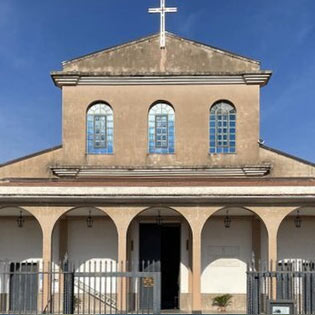Castle of the Slaves in Fiumefreddo

Andrej Antipin - CC4.0
The Castello degli Schiavi di Fiumefreddo is a jewel of the Sicilian rural baroque of the 1700s.
At the entrance to the castle there is a majestic portal with a lava stone arch depicting , in the center, a Saracen with an angry face surmounted by a shell. The arch rests on two false shelves that stand as if to support the two lava sides of the portal. The whole portal alternates flattened rectangles with as many having a pyramid. the wall that flanks the portico still preserves the lava stone loops to which horses were once tied.
The villa has a large loggia from whose openings the characteristic statues of the two Moors are "facing" linked to a legend. Internally the villa has a lower floor connected to the basement where there is a trap door. This trap door leads to an underground passage which probably led to the Torre Rossa di Fiumefreddo. The upper floor has a balcony on the outside and in each corner there are small polygonal towers, crowned by small domes from which the owner observed that the work was done without being seen by the workers. On this floor we find eight rooms, filled with valuable objects: paintings of antiques, the flag with the Savoy coat of arms, valuable books, furniture from the last century. The castle has a large courtyard where there is a well and the small church, formerly dedicated to the cult of San Giovanni, built in 1544 by Ferdinando Gravina-Crujllas, as stated in the plaque placed at the entrance.
The Castle of the Slaves has been a film set several times and for this reason it has become famous all over the world. Francis Ford Coppola in fact chose him to shoot some of the main scenes of "The Godfather". In 1968 Pier Paolo Pasolini shot some parts of "L'orgia" there. In 1998 Franco Battiato chose it for the production of the music video Schock in My Town.


